Abstract
Herrnstein's (1970) hyperbolic matching equation describes the relationship between response rate and reinforcement rate. It has two estimated parameters, k and Re. According to one interpretation, k measures motor performance and Re measures the efficacy of the reinforcer maintaining responding relative to background sources of reinforcement. Experiment 1 tested this interpretation of the Re parameter by observing the effect of adding and removing an additional source of reinforcement to the context. Using a within-session procedure, estimates of Re were obtained from the response-reinforcer relation over a series of seven variable-interval schedules. A second, concurrently available variable-interval schedule of reinforcement was added and then removed from the context. Results showed that when the alternative was added to the context, the value of Re increased by 107 reinforcers per hour; this approximated the 91 reinforcers per hour obtained from this schedule. Experiment 2 investigated the effects of signaling background reinforcement on k and Re. The signal decreased Re, but did not have a systematic effect on k. In general, the results supported Herrnstein's interpretation that in settings with one experimenter-controlled reinforcement source, Re indexes the strength of the reinforcer maintaining responding relative to uncontrolled background sources of reinforcement.
Full text
PDF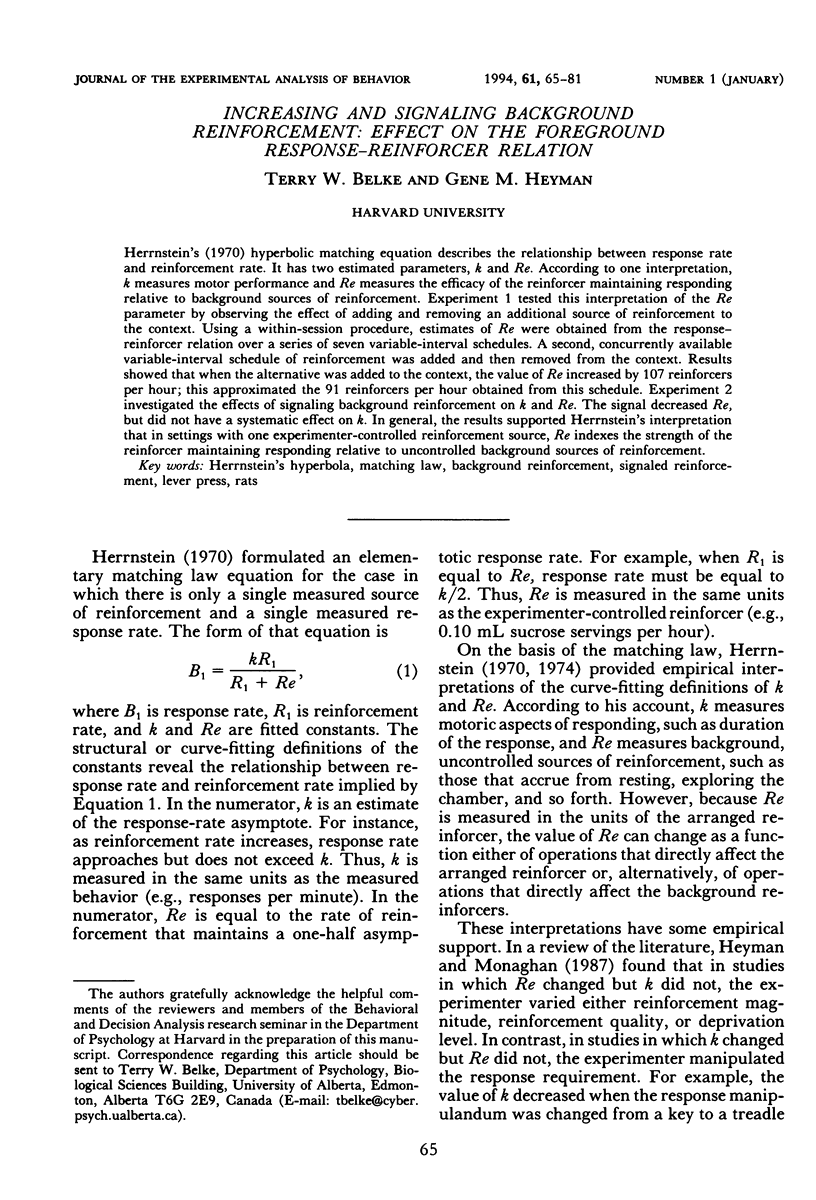
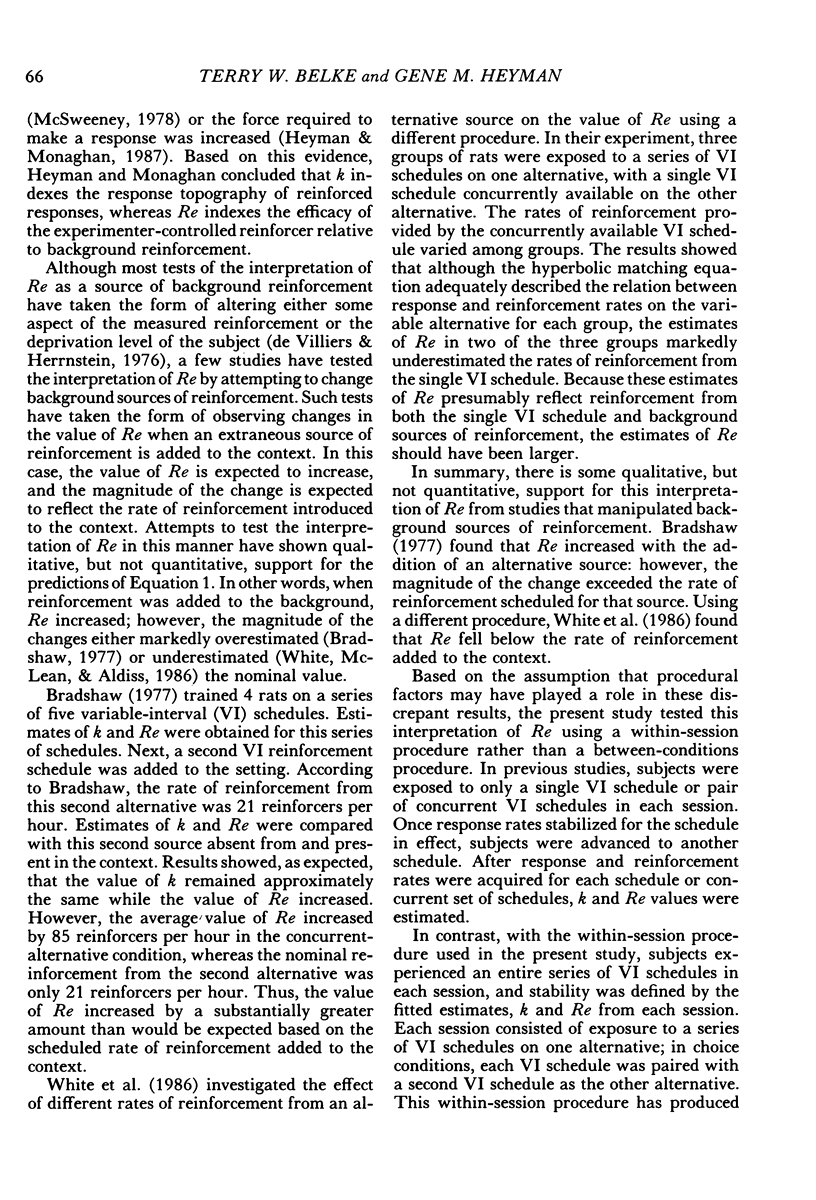
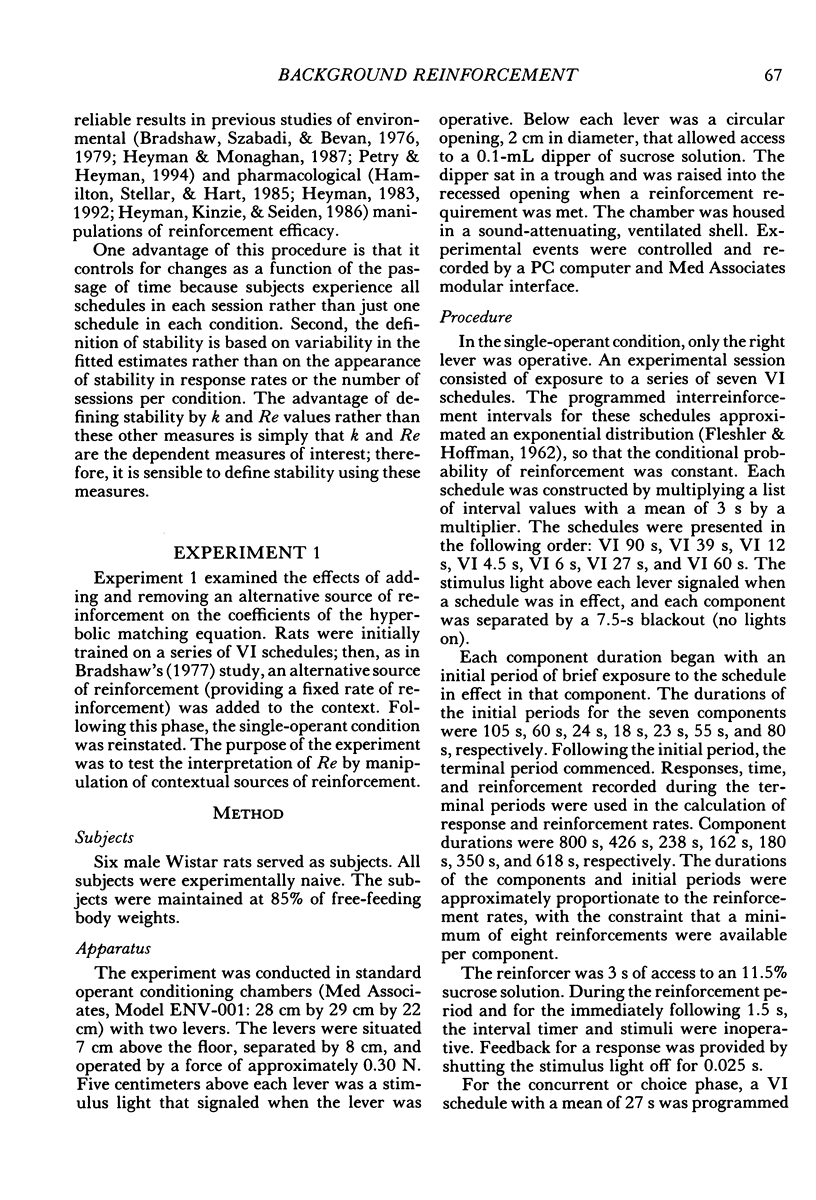
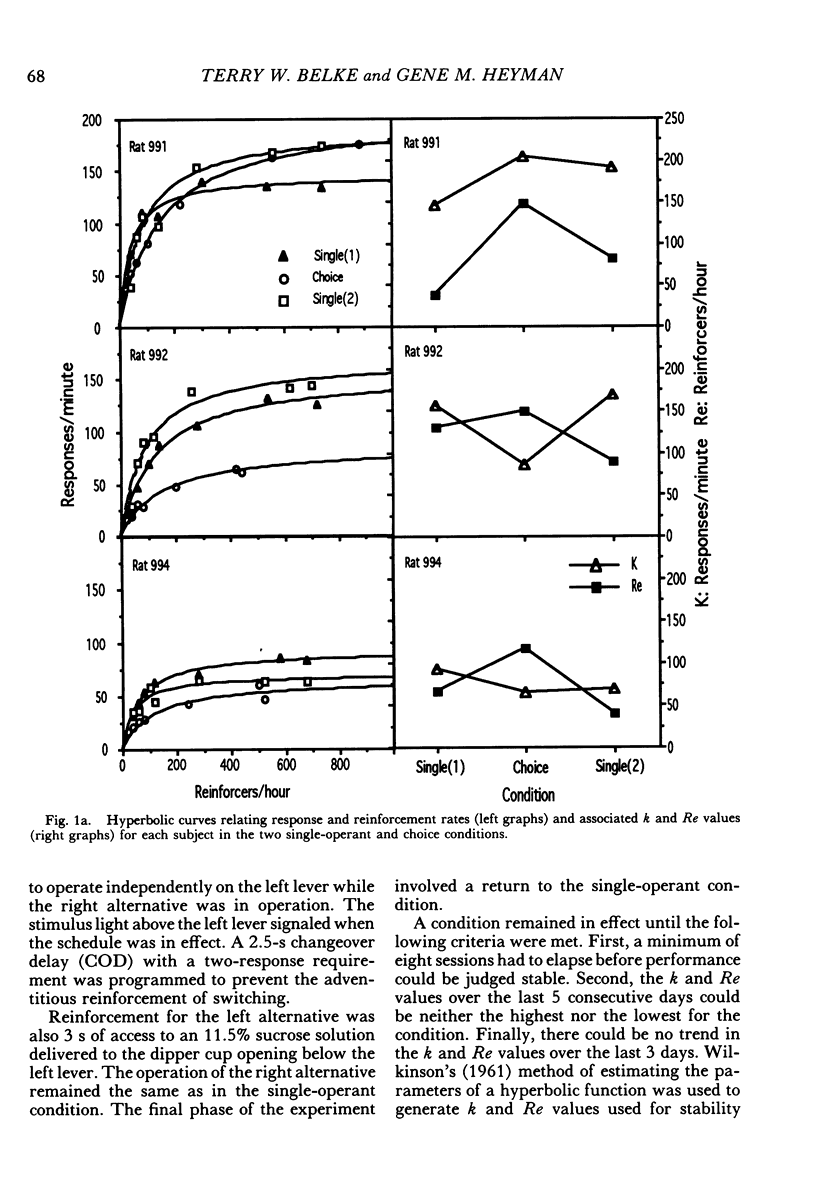
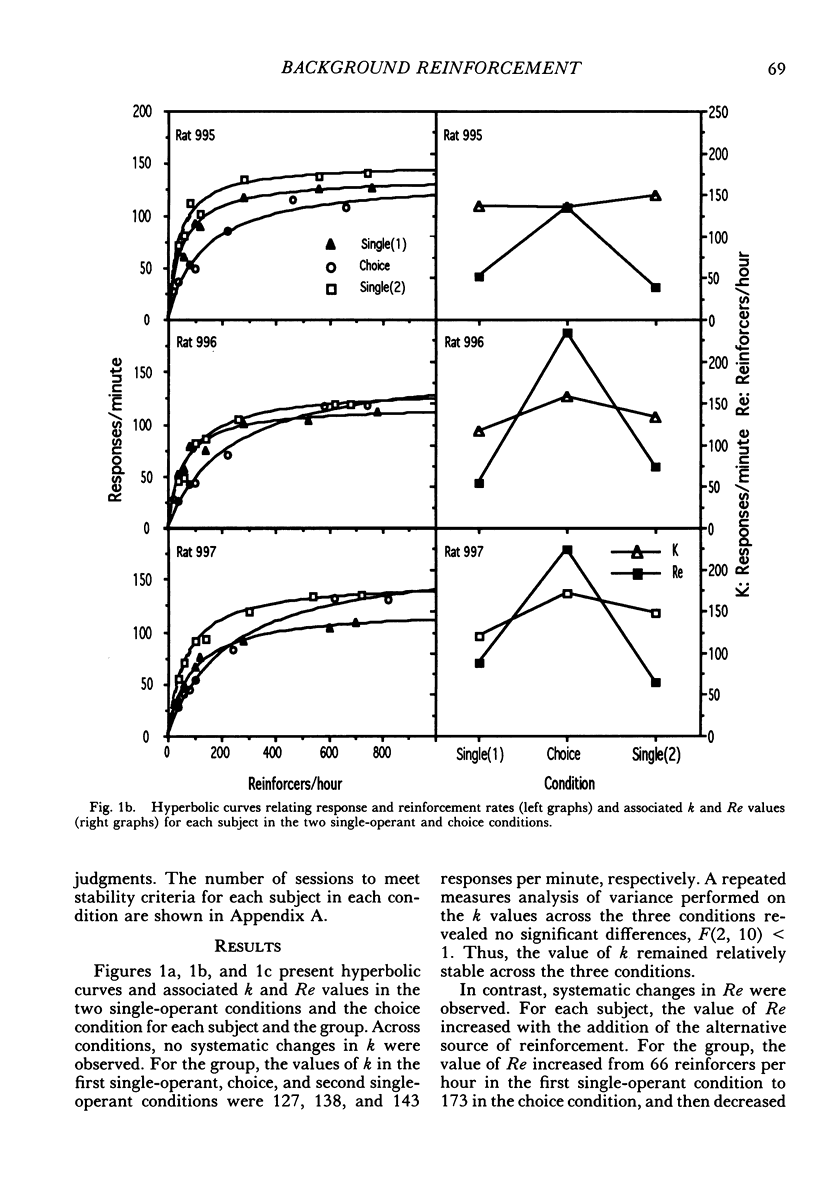

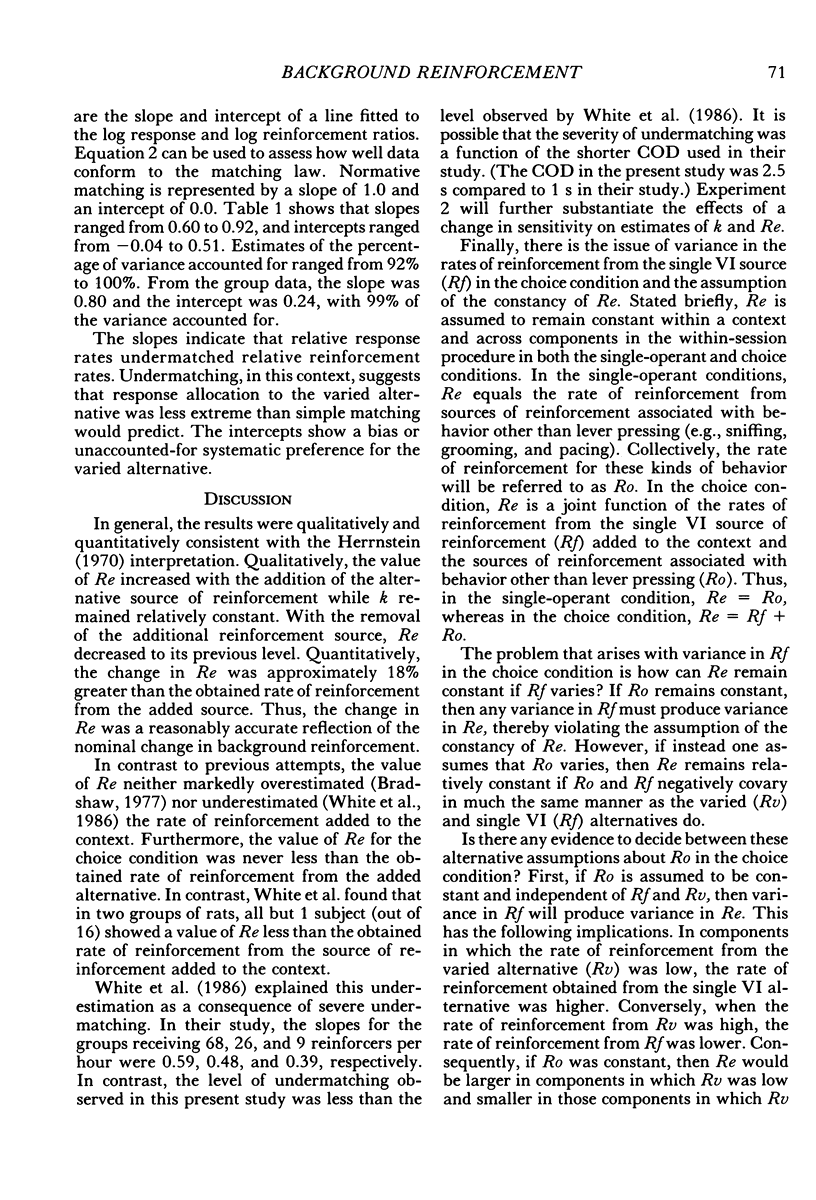

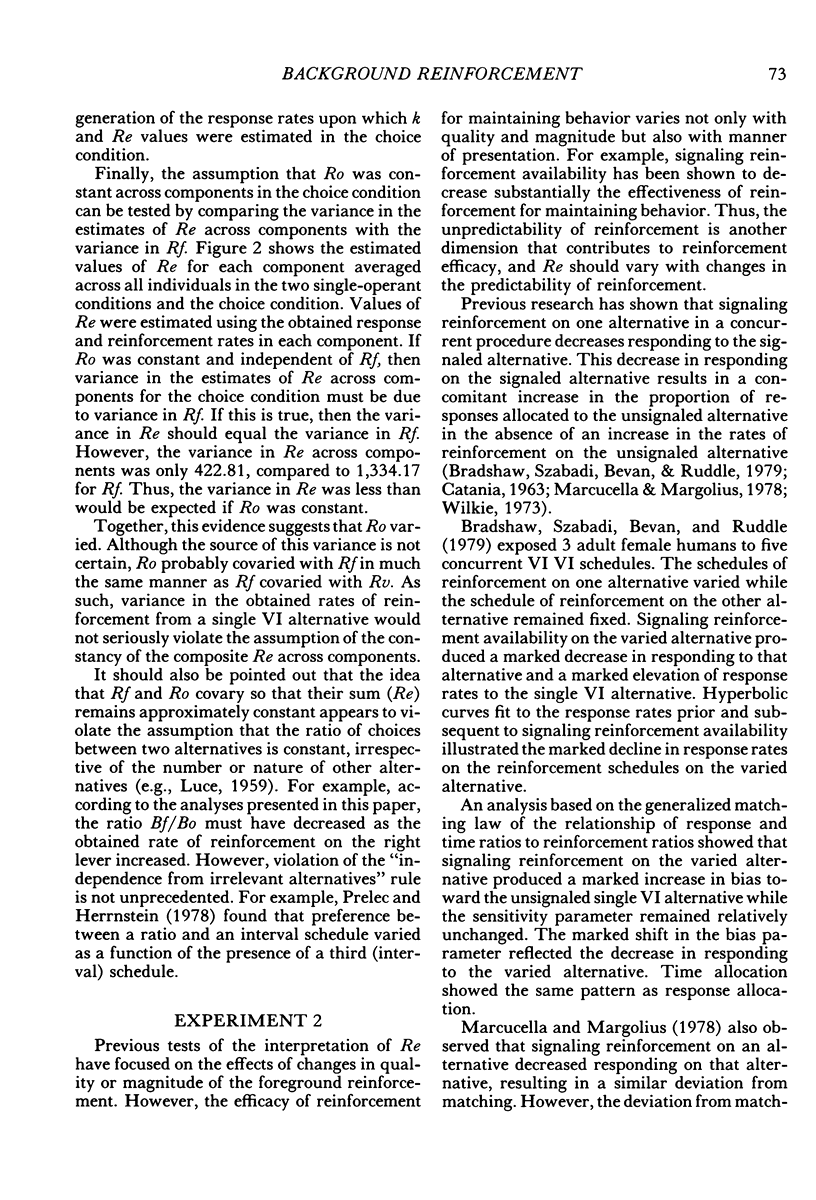
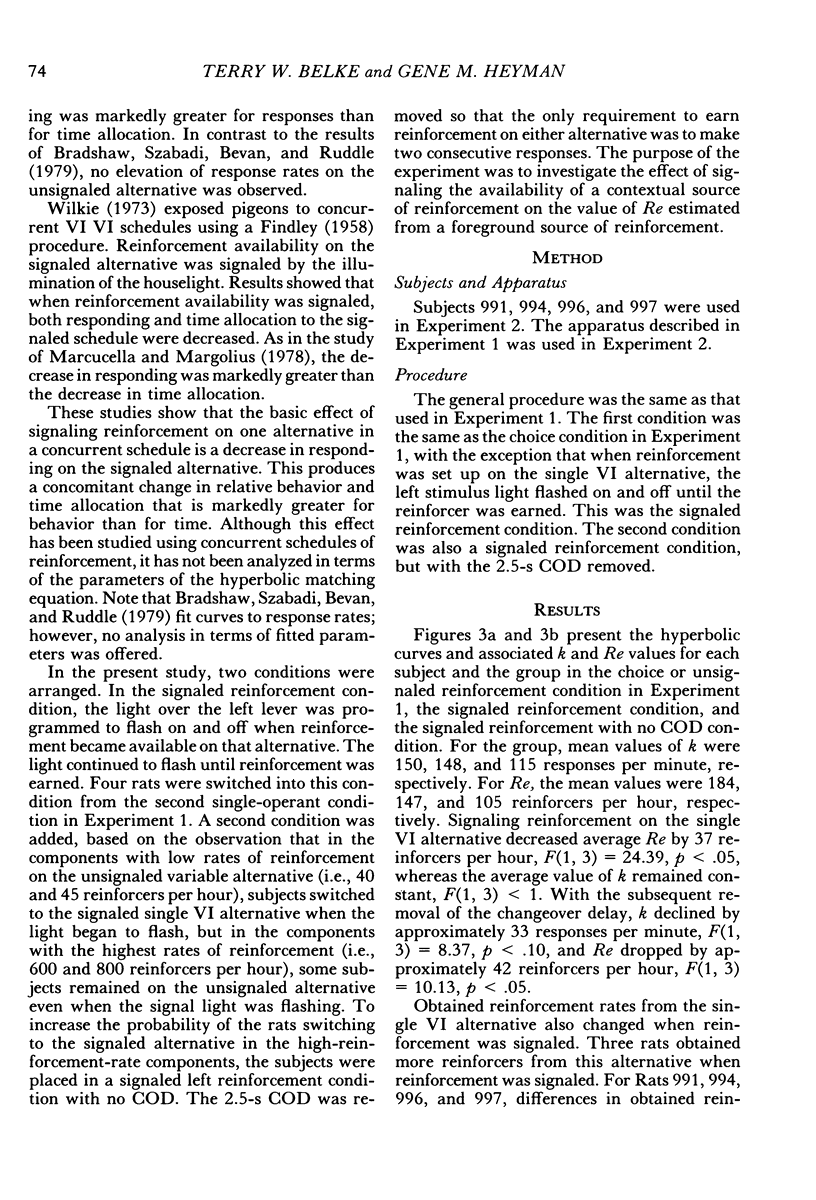
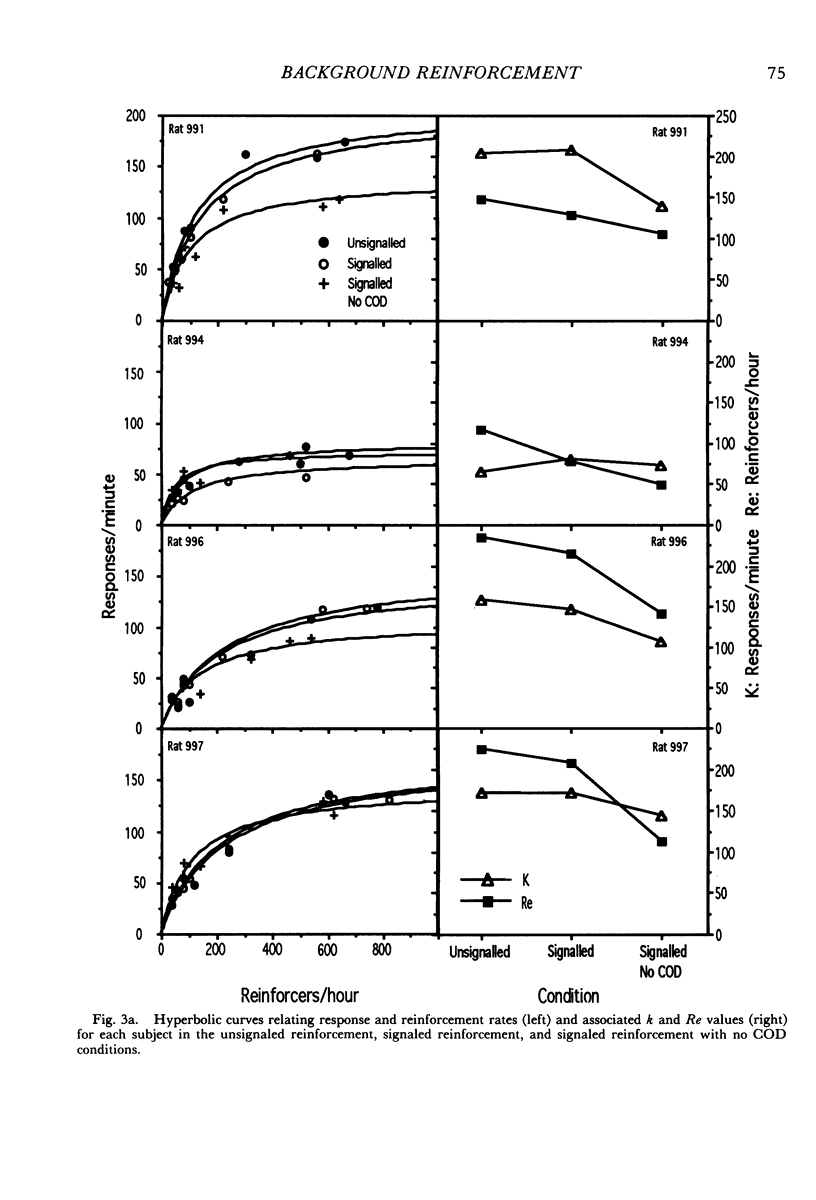
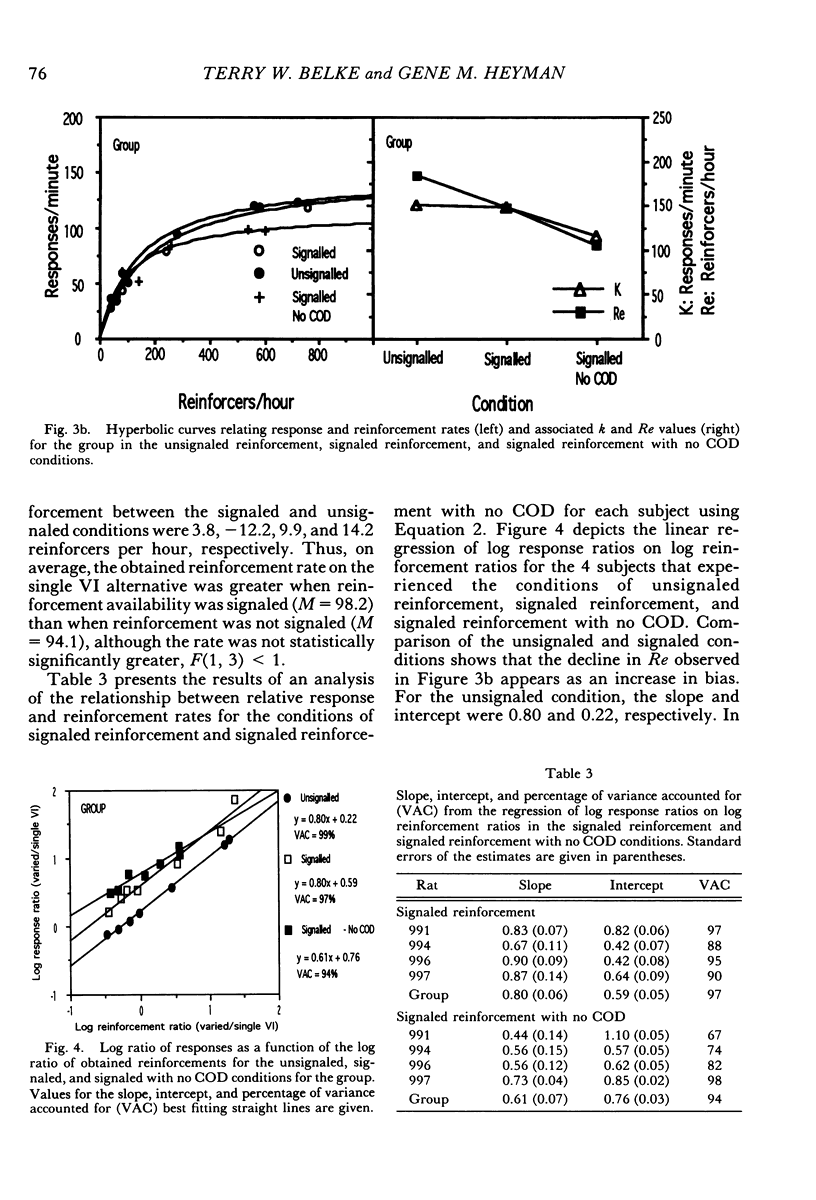

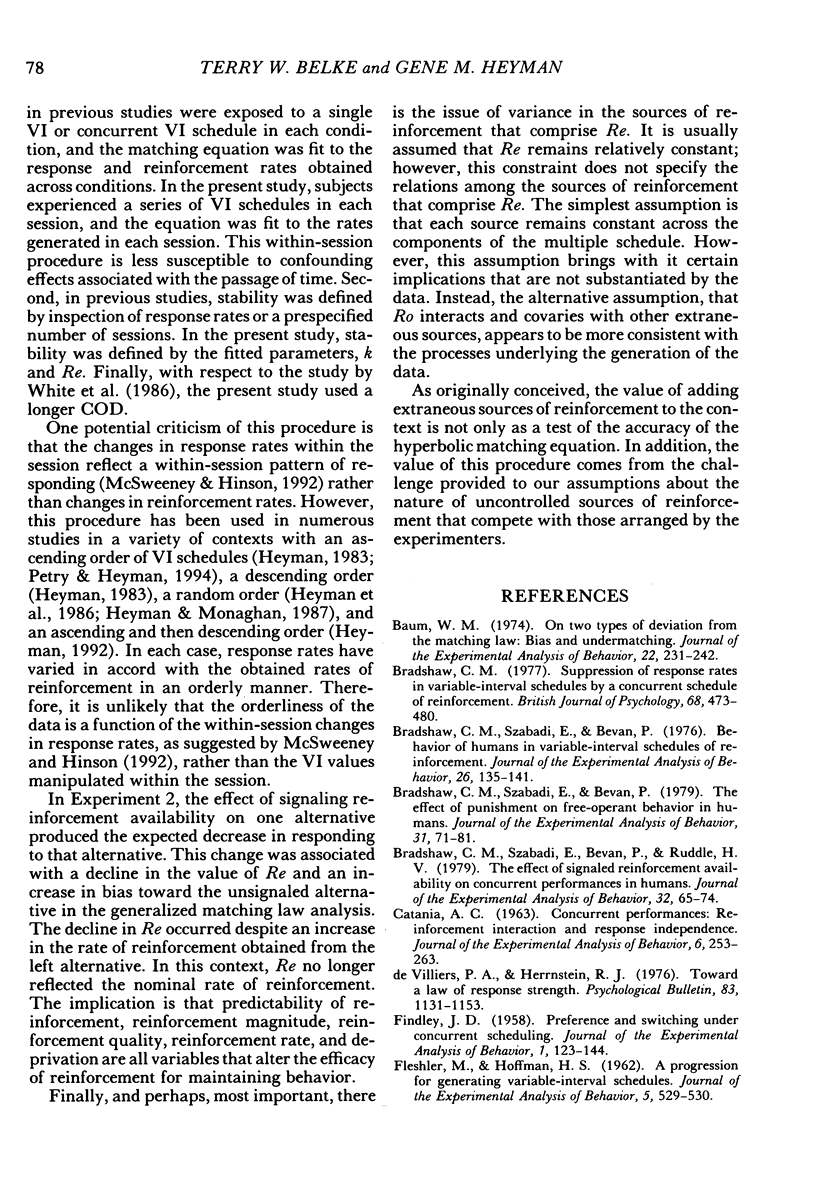
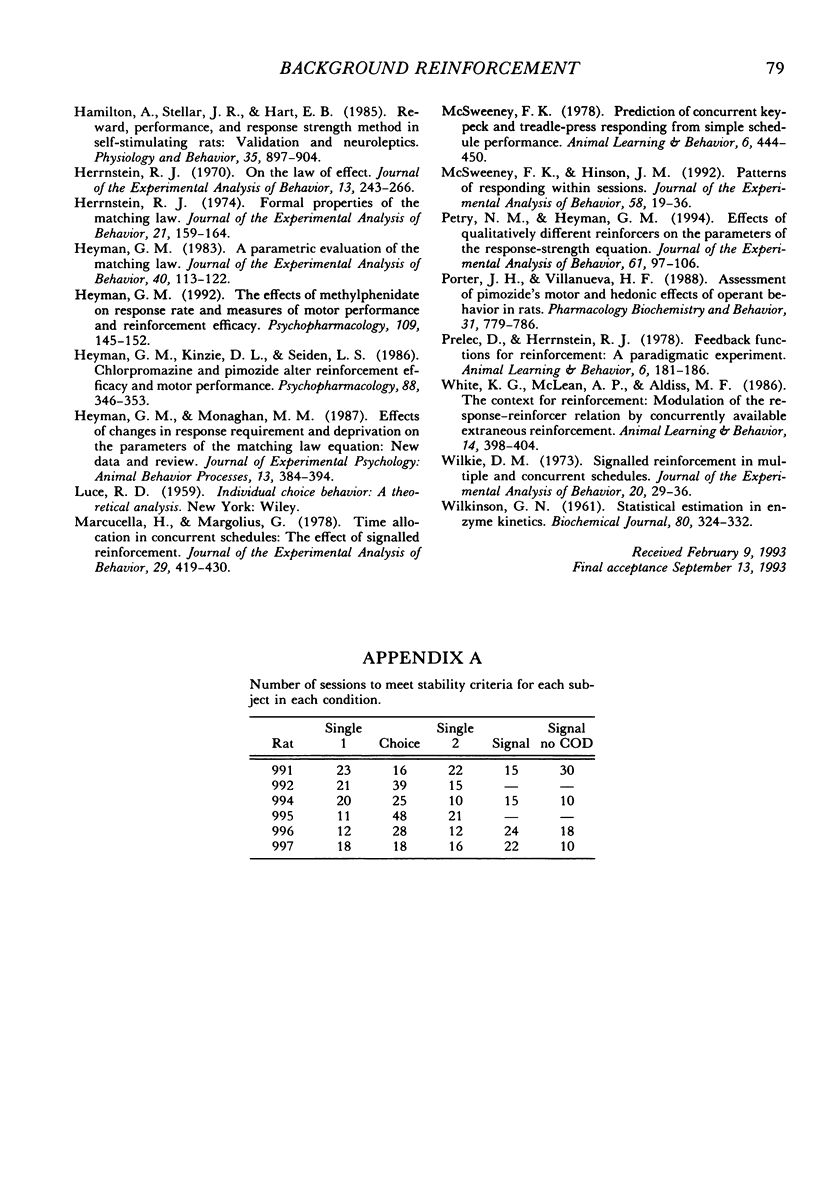
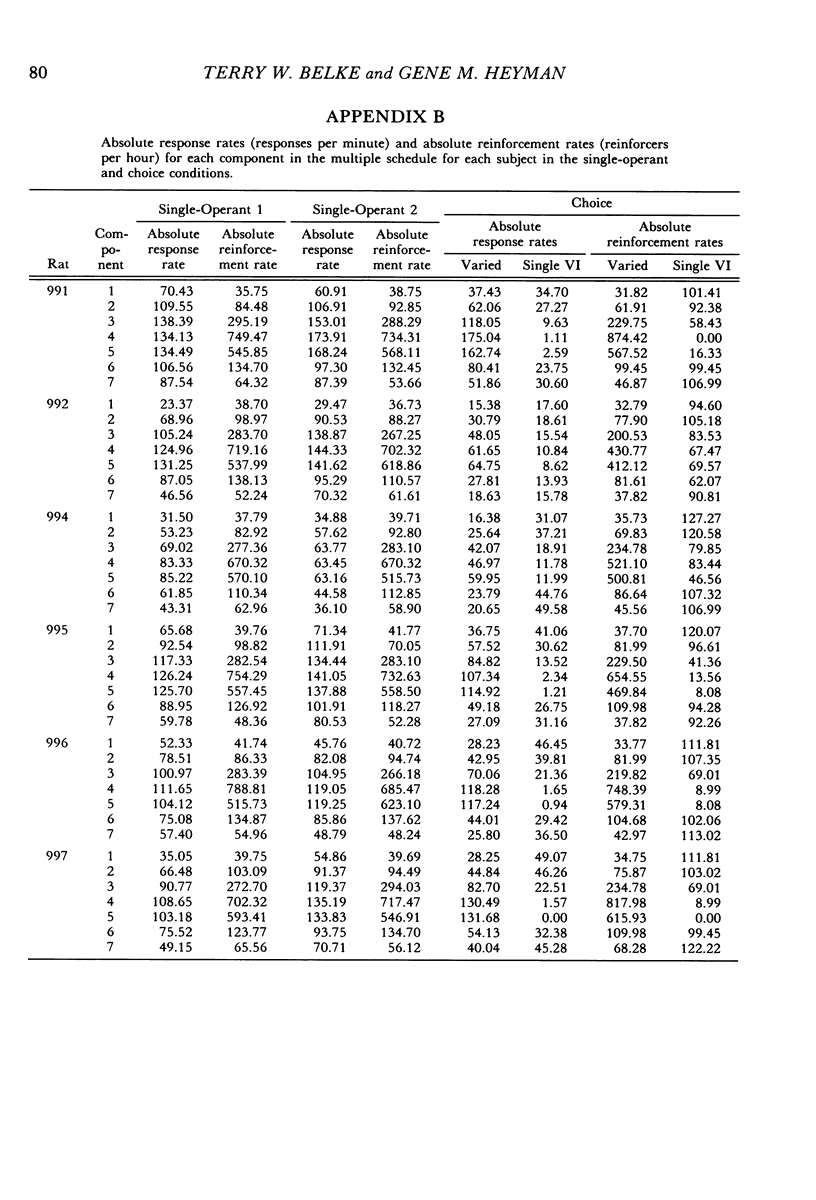

Selected References
These references are in PubMed. This may not be the complete list of references from this article.
- Baum W. M. On two types of deviation from the matching law: bias and undermatching. J Exp Anal Behav. 1974 Jul;22(1):231–242. doi: 10.1901/jeab.1974.22-231. [DOI] [PMC free article] [PubMed] [Google Scholar]
- Bradshaw C. M., Szabadi E., Bevan P. Behavior of humans in variable-interval schedules of reinforcement. J Exp Anal Behav. 1976 Sep;26(2):135–141. doi: 10.1901/jeab.1976.26-135. [DOI] [PMC free article] [PubMed] [Google Scholar]
- Bradshaw C. M., Szabadi E., Bevan P., Ruddle H. V. The effect of signaled reinforcement availability on concurrent performances in humans. J Exp Anal Behav. 1979 Jul;32(1):65–74. doi: 10.1901/jeab.1979.32-65. [DOI] [PMC free article] [PubMed] [Google Scholar]
- Bradshaw C. M., Szabadi E., Bevan P. The effect of punishment on free-operant choice behavior in humans. J Exp Anal Behav. 1979 Jan;31(1):71–81. doi: 10.1901/jeab.1979.31-71. [DOI] [PMC free article] [PubMed] [Google Scholar]
- CATANIA A. C. Concurrent performances: reinforcement interaction and response independence. J Exp Anal Behav. 1963 Apr;6:253–263. doi: 10.1901/jeab.1963.6-253. [DOI] [PMC free article] [PubMed] [Google Scholar]
- FLESHLER M., HOFFMAN H. S. A progression for generating variable-interval schedules. J Exp Anal Behav. 1962 Oct;5:529–530. doi: 10.1901/jeab.1962.5-529. [DOI] [PMC free article] [PubMed] [Google Scholar]
- Findley J. D. Preference and Switching under Concurrent Scheduling. J Exp Anal Behav. 1958 Apr;1(2):123–144. doi: 10.1901/jeab.1958.1-123. [DOI] [PMC free article] [PubMed] [Google Scholar]
- Hamilton A. L., Stellar J. R., Hart E. B. Reward, performance, and the response strength method in self-stimulating rats: validation and neuroleptics. Physiol Behav. 1985 Dec;35(6):897–904. doi: 10.1016/0031-9384(85)90257-4. [DOI] [PubMed] [Google Scholar]
- Herrnstein R. J. Formal properties of the matching law. J Exp Anal Behav. 1974 Jan;21(1):159–164. doi: 10.1901/jeab.1974.21-159. [DOI] [PMC free article] [PubMed] [Google Scholar]
- Herrnstein R. J. On the law of effect. J Exp Anal Behav. 1970 Mar;13(2):243–266. doi: 10.1901/jeab.1970.13-243. [DOI] [PMC free article] [PubMed] [Google Scholar]
- Heyman G. M. A parametric evaluation of the hedonic and motoric effects of drugs: pimozide and amphetamine. J Exp Anal Behav. 1983 Sep;40(2):113–122. doi: 10.1901/jeab.1983.40-113. [DOI] [PMC free article] [PubMed] [Google Scholar]
- Heyman G. M. Effects of methylphenidate on response rate and measures of motor performance and reinforcement efficacy. Psychopharmacology (Berl) 1992;109(1-2):145–152. doi: 10.1007/BF02245492. [DOI] [PubMed] [Google Scholar]
- Heyman G. M., Kinzie D. L., Seiden L. S. Chlorpromazine and pimozide alter reinforcement efficacy and motor performance. Psychopharmacology (Berl) 1986;88(3):346–353. doi: 10.1007/BF00180837. [DOI] [PubMed] [Google Scholar]
- Marcucella H., Margolius G. Time allocation in concurrent schedules: the effect of signalled reinforcement. J Exp Anal Behav. 1978 May;29(3):419–430. doi: 10.1901/jeab.1978.29-419. [DOI] [PMC free article] [PubMed] [Google Scholar]
- McSweeney F. K., Hinson J. M. Patterns of responding within sessions. J Exp Anal Behav. 1992 Jul;58(1):19–36. doi: 10.1901/jeab.1992.58-19. [DOI] [PMC free article] [PubMed] [Google Scholar]
- Petry N. M., Heyman G. M. Effects of qualitatively different reinforcers on the parameters of the response-strength equation. J Exp Anal Behav. 1994 Jan;61(1):97–106. doi: 10.1901/jeab.1994.61-97. [DOI] [PMC free article] [PubMed] [Google Scholar]
- Porter J. H., Villanueva H. F. Assessment of pimozide's motor and hedonic effects on operant behavior in rats. Pharmacol Biochem Behav. 1988 Dec;31(4):779–786. doi: 10.1016/0091-3057(88)90383-8. [DOI] [PubMed] [Google Scholar]
- WILKINSON G. N. Statistical estimations in enzyme kinetics. Biochem J. 1961 Aug;80:324–332. doi: 10.1042/bj0800324. [DOI] [PMC free article] [PubMed] [Google Scholar]
- Wilkie D. M. Signalled reinforcement in multiple and concurrent schedules. J Exp Anal Behav. 1973 Jul;20(1):29–36. doi: 10.1901/jeab.1973.20-29. [DOI] [PMC free article] [PubMed] [Google Scholar]


